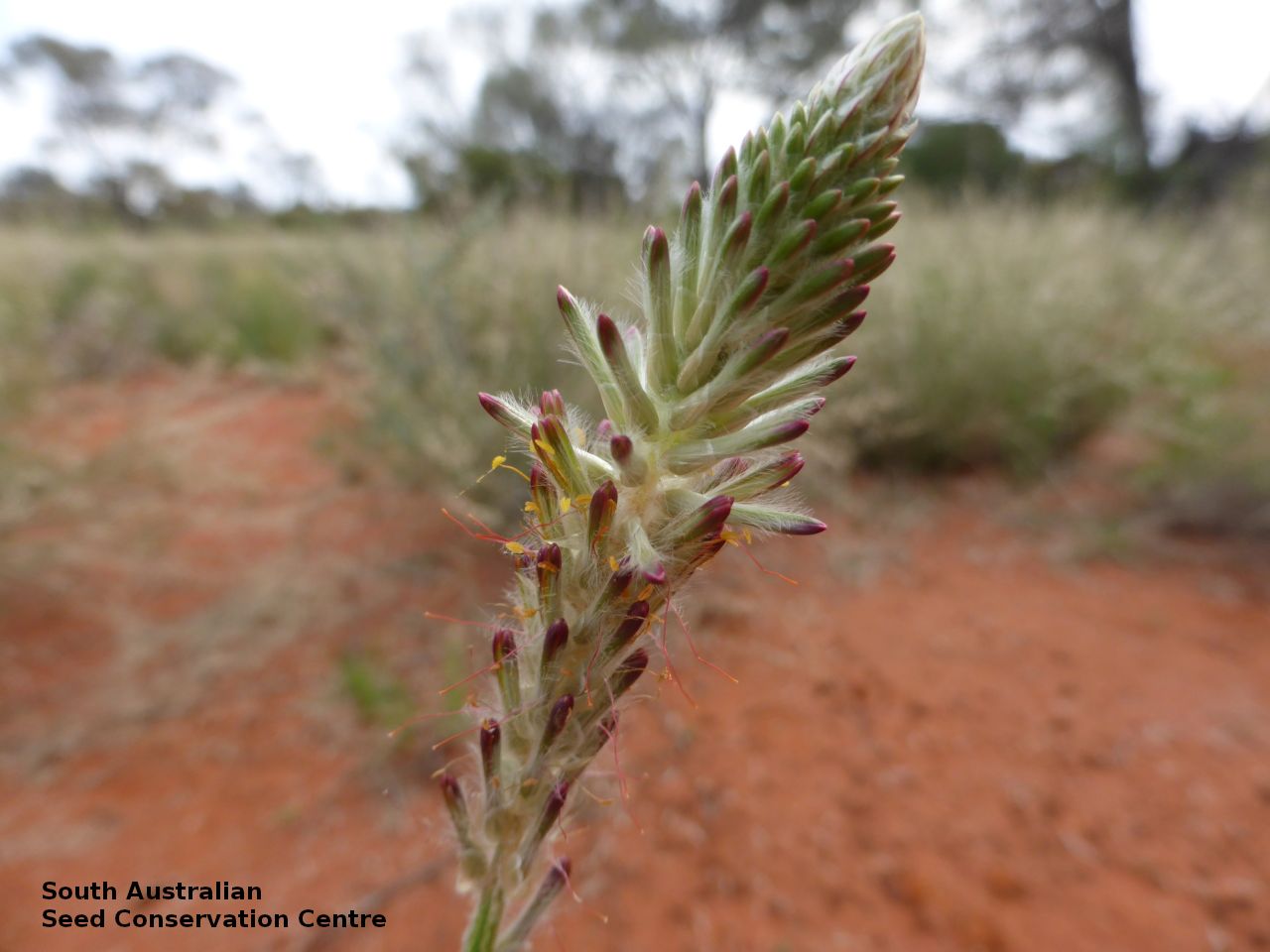










Botanical art
Prior names
Ptilotus alopecuroideus f. rubriflorus
Ptilotus alopecuroideus var. rubriflorus
Trichinium alopecuroideum var. rubriflorum
Ptilotus polystachyus f. rubriflorus
Ptilotus polystachyus f. polystachyus
Ptilotus polystachyus var. polystachyus
Trichinium polystachyum
Trichinium alopecuroideum
Trichinium candicans
Trichinium preissii
Trichinium pallidum
Ptilotus alopecuroideus
Common names
Bottle-washers
Long-tails
Etymology
Ptilotus from the Greek 'ptilotos' meaning feathered or winged; referring to the hairy flowers. Polystachyus from the Greek 'poly' meaning many and 'stachys' meaning spike; possibly referring to the species many erect flower-spikes.
Distribution and status
Found across the drier inland areas of South Australia, growing in a wide range of habitats. Also found in all mainland states. Native. Common in South Australia. Very rare in Victoria. Common in the other states.
Herbarium regions: North Western, Lake Eyre, Nullarbor, Gairdner-Torrens, Flinders Ranges, Eastern, Eyre Peninsula, Murray, Southern Lofty, Green Adelaide
AVH map: SA distribution map (external link)
Plant description
Annual or perennial herb to 1.5 m tall. Basal leaves to 21 cm long and 36 mm wide, soon withering. Stem leaves alternating along the stem, to 10 cm long and 6 mm wide, linear to flat, hairy when young, edges wavy. Flower-spikes terminal, cylindrical and solitary with fragrant, yellow-green, sometimes reddish flowers. Flowering between May and November. Fruits are white to pale brown, cylindrical head containing numerous long papery and hairy fruits, each containing one seed. Seeds are brown reinform seed to 2 mm long and 1.2 mm wide. Seed embryo type is peripheral.
Seed collection and propagation
Collect seeds between September and December. Be very careful when collecting this species as the fruits contain fine hairs that may cause an allergic reaction for some people. Collect the fruit heads when dried to a pale straw colour. Each fruit should come off the head easily when fingers are rubbed up the stem. Collect more fruits than required as not all fruits contain viable seed. Be very careful when cleaning this species as the fruits contain fine hairs that may cause an allergic reaction for some people. To clean, rub the fruit heads gently to dislodge the seed at the base of each fruit. Use a sieve to separate the unwanted material. Store the seeds with a desiccant such as dried silica beads or dry rice, in an air tight container in a cool and dry place. From one collection, the seed viability was high, at 90%. Seeds are non-dormant, viable seed should germinate readily.
| Location | No. of seeds (weight grams) | Number of plants | Date collected | Collection number Collection location | Date stored | % Viability | Storage temperature |
|---|---|---|---|---|---|---|---|
| BGA MSB | 28,500 (123 g) 28,500 (123 g) | 100 | 26-Oct-2004 | MOL4624 Gairdner-Torrens | 28-Mar-2006 | 90% | -18°C |
| BGA | 2,470 (3.582 g) | 9-Dec-2022 | Royal Adelaide Golf Club Southern Lofty | 20-Jun-2023 | 90% | -18°C |
Number of plants: This is the number of plants from which the seeds were collected.
Collection location: The Herbarium of South Australia's region name.
% Viability: Percentage of filled healthy seeds determined by a cut test or x-ray.